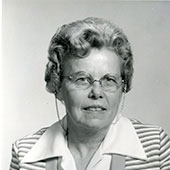Dr. Sue Eakin
Listen: Slave Owner Epps vs. Liberal Bass

Originally published in 1853, Twelve Years a Slave was lost to history by the early twentieth century, when it could not be located by libraries, stores or catalogues (see 1922 New Orleans Item news clipping). Then a 12-year-old avid reader in central Louisiana, Sue Eakin discovered a dusty copy of the book in a plantation home near the property where Solomon Northup had been enslaved, and it would determine her life’s path.